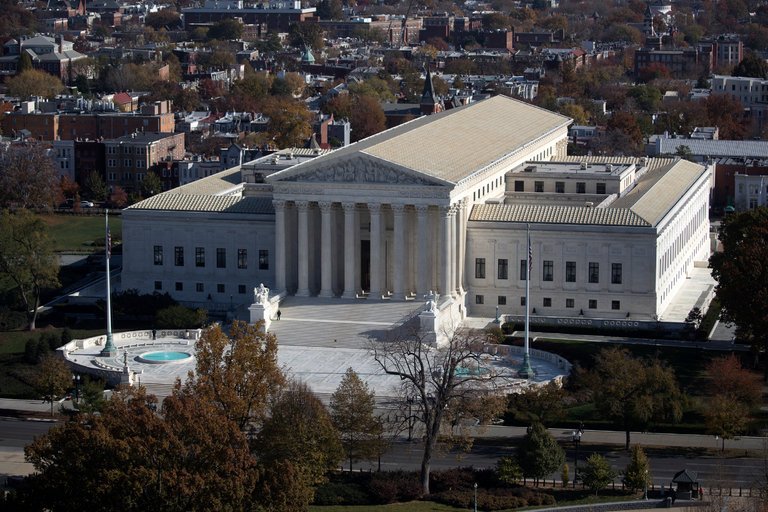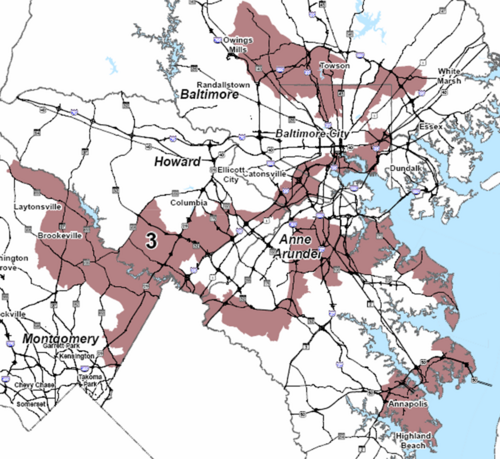Gerrymandering Is Here to Stay, and the Left Is Locked Out
The Supreme Court last month showed its ongoing neglect of protecting the nation by once again ducking any ruling on electoral redistricting, generally called gerrymandering. Hopes had been high that our black-robed solons would finally finally confront what they have so many times avoided — this increasing threat to our democracy — but they wimped. The justices resorted to an all-too-frequent dodge that the plaintiffs lack standing — voters in a voting rights case in their own state have no standing, we’re told — Plaintiffs were not harmed because they are in a heavily Democratic district, said the ruling. That the justices say that the Democratic majority in their district saved them from harm admits there is actual harmful rigging in other districts where Republicans hold sway, but it’s the technicalities that are important. In a second case they ruled against a Republican challenge to a Democratic plan to redraw a particular district that had been held in perpetuity by the GOP. The court ducked this one saying that the litigants had waited too long to bring the case. Any excuse will do. Election maps are drawn by state legislatures with the party in power deciding where the lines are drawn. Thus they exploit a self-serving process that perpetuates themselves in office, both state posts and congressional seats, to the exclusion of the opposition party or parties. Whereas once humans with pencils and erasers did their best to figure out where the voters lived and where to draw lines around them, software has optimized making districts impregnable, turning gerrymandering into anathema for the democratic process. Justice Anthony Kennedy was thought to be key in pressing the Court to finally come up with what he called in 2004 “a workable standard”. Instead, 14 years later, nothing. Election law professor Richard Hasen at the University of California, Irvine, said to The New York Times … “Justice Hamlet lives. After a decade and a half of ruminating on how to separate permissible from impermissible consideration of party in redistricting, Justice Kennedy has decided he — or his successor — needs still more time for rumination.” Will nominee Brett Kavanaugh even ruminate? The cases sent back to the states will presumably be returned to the Supreme Court. Prefiguring what is to come with Kavanaugh, thought to be the most conservative of the nine, Justices Clarence Thomas and Neil Gorsuch wrote a separate opinion in the Wisconsin case, saying they would have thrown it out altogether, rather than send it back. Only the courts are left to put an end to this corrosion of the American electoral system, but these jurists are now saying the public should have no recourse at all. They like things just the way they are — a United States locked in the conservative yoke. The dream realized, a kind of Thousand-Year Reich for which the right have been working for decades, with elections rigged against liberals ever regaining power. The Court runs from dealing with gerrymander cases where the battle lines are partisan — between one political party and another. They shrink from the prospect of having to decide in favor of one party or the other in case after case. But the Court has regularly stepped in to strike down redistricting along racial lines, where as many blacks as possible are herded into a district to limit them to its one congressional seat, while “bleaching” the surrounding districts to make them safe for whites. As if that’s not politically partisan. As if the whole point of racial gerrymandering is not to isolate blacks who vote overwhelmingly Democratic. Exhibiting a new willingness to revisit settled law — otherwise known as legislating from the bench — Gorsuch and Thomas, have even raised the question of whether Section 2 of the Voting Rights Act of 1965 has any bearing on racial gerrymandering. The Supreme Court has already eviscerated parts of the Act that prevented chiefly southern states from enacting discriminatory voting laws. But Section 2 is permanent and applies nationwide “to any voting standard, practice, or procedure that results in the denial or abridgement of the right of any citizen to vote on account of race, color, or membership in a language minority group”. What they’re saying is that blacks herded into districts drawn to prevent their influence elsewhere are still able to vote, so what’s been abridged? The “textualists” will see to it that gerrymandering lives on. Gerrymandering has appeared on these pages repeatedly since we began in 2012. Just type “gerrymandering” in the search box at the top right of this page and scroll through the results. What is galling is that all along we have pointed out that gerrymandering can be abolished immediately nationwide and democracy restored by reworking that Begin by dividing a state into the nearest to equal size rectangles that irregular borders and waterways permit. Iteratively adjust each area’s size and shape, swelling or contracting, with no regard to whatever political parties and ethnic groups predominate in the areas being manipulated, until optimally equal populations are arrived at for each district. Job done. Imagine the rhetorical convolutions politicians would have to come up with to justify voting against a change to a pure electoral democracy, rendered agnostic, paying no regard to political party. They will never have to, of course. The right end of the court will cite the Constitution, which prescribes that… “The Times, Places and Manner of holding Elections for Senators and Representatives, shall be prescribed in each State by the Legislature thereof…” No sign of checks and balances in that proviso, whereby state assembly members are free to write laws that perpetuate themselves in power. But the originalists will say only state legislatures decide voting rules, no matter how corruptive of democracy, and they will wash their hands of accepting any challenges to gerrymandering or other laws passed by states to hinder access to the polls. Gerrymandering is with us for good as we go on pretending this is a democracy. 
for not adequately proving that they had been directly harmed. They sent the case back to a Wisconsin court telling them to try again to prove that the state’s Republican-controlled legislature had rigged the vote. 
Maryland’s 3rd District.
same software that Republicans have been using to draw outlandish spaghetti-tangled districts to snuff Democrats. Algorithms would work as follows:
